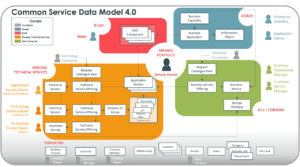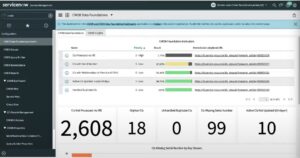O Common Service Data Model (CSDM) na ServiceNow é uma estrutura padronizada que ajuda as organizações a estruturar e gerenciar seus itens de configuração (CIs), CMDB (Configuration Management Database) e serviços dentro da plataforma ServiceNow. Ele fornece uma maneira consistente de definir e relacionar diferentes aspectos de serviços de TI e serviços de negócios, permitindo melhor visibilidade, gerenciamento e relatórios.
Principais componentes do CSDM:

1. Dados de Fundação:
- Localização: Locais físicos onde os serviços são prestados.
- Usuário: Pessoas ou grupos que utilizam os serviços.
- Empresa: Pessoas jurídicas proprietárias dos serviços.
2. Design:
- Portfólio de Serviços: Catálogo de serviços comerciais e técnicos.
- Business Service: Serviços prestados à empresa.
- Serviço Técnico: Serviços de TI que suportam serviços de negócios.
3. Gerenciar Serviços Técnicos:
- Serviços de Aplicação: Agrupamento de CIs que entregam aplicações.
- Serviços de Infraestrutura: Agrupamento de ICs que entregam infraestrutura.
4. Vender/Consumir:
- Ofertas: Descrições dos serviços disponíveis aos consumidores.
- Catálogo de Serviços: Coleção de ofertas disponíveis para solicitação.
5. Gerenciar Serviços de negócios:
- Capacidades de Negócio: Habilidades de alto nível que a organização precisa.
- Aplicativos de negócios: Aplicativos que suportam recursos de negócios.
Benefícios do CSDM:
- Melhoria na Gestão de Serviços: Fornece uma estrutura clara para gerenciar serviços e CIs, melhorando o gerenciamento de incidentes, problemas, mudanças e serviços.
- Relatórios e análises aprimorados: Facilita melhores relatórios e análises devido a dados padronizados.
- Maior visibilidade: Oferece melhor visibilidade das relações entre os serviços e sua infraestrutura de suporte.
- Alinhamento com as Melhores Práticas: Alinha-se com ITIL e outras melhores práticas do setor, garantindo uma estrutura robusta de gerenciamento de serviços de TI.
Implementando CSDM no ServiceNow:
- Avaliar dados atuais: Avaliar dados existentes e seu alinhamento com os padrões CSDM.
- Defina a estrutura CSDM: Personalize a estrutura CSDM para atender às necessidades específicas da sua organização.
- Migração e limpeza de dados: Migre os dados existentes para a estrutura CSDM e limpe quaisquer inconsistências.
- Governança contínua: Estabelecer processos de governança para manter a qualidade dos dados e a conformidade com os padrões CSDM.
Ao aderir ao CSDM, as organizações podem obter uma abordagem mais organizada e eficiente para gerenciar seus serviços de TI e de negócios no ServiceNow.
O Common Service Data Model (CSDM) e o Configuration Management Database (CMDB) no ServiceNow são conceitos intimamente relacionados que trabalham juntos para melhorar o gerenciamento de serviços de TI. Aqui está um detalhamento de como eles interagem e se complementam:
Banco de Dados de Gerenciamento de Configuração (CMDB):
O CMDB é um repositório que armazena informações sobre a infraestrutura de TI, incluindo detalhes sobre itens de configuração (CIs), como servidores, aplicativos, dispositivos de rede e relacionamentos entre eles. Ele serve como uma fonte central de verdade para os ambientes de TI, fornecendo visibilidade sobre os componentes que compõem os serviços de TI.
Principais características do CMDB:
- Armazenamento centralizado de dados: Agrega dados de várias fontes em um único repositório.
- Mapeamento de Relacionamento: Rastreia dependências e relacionamentos entre CIs.
- Gestão de Mudanças: Facilita a análise e gestão do impacto das mudanças através da compreensão das interdependências da CI.
- Gerenciamento de Incidentes e Problemas: Suporta análise e resolução de causa raiz fornecendo informações detalhadas de CI.
- Conformidade e Auditoria: Garante a conformidade com políticas e regulamentos através de acompanhamento e relatórios detalhados.
Principais componentes do CSDM:
- Dados de Fundação: Elementos básicos como locais, usuários e empresas.
- Design: Estrutura negócios e serviços técnicos, portfólios de serviços e relacionamentos.
- Gerenciar Serviços Técnicos: Foca em serviços de aplicação e infraestrutura.
- Vender/Consumir: Inclui ofertas de serviços e catálogos.
- Gerenciar serviços de negócios: Define recursos e aplicativos de negócios.
Como o CSDM aprimora o CMDB:

1. Padronização:
O CSDM fornece uma maneira consistente e padronizada de estruturar e relacionar ICs e serviços dentro do CMDB, garantindo que os dados sejam organizados de forma lógica e abrangente.
2. Melhoria da qualidade dos dados:
Ao seguir as diretrizes do CSDM, as organizações podem melhorar a precisão e a completude dos dados do CMDB, levando a insights e tomadas de decisão mais confiáveis.
3. Visibilidade melhorada:
A estrutura do CSDM facilita a visualização das relações entre serviços de negócios, serviços técnicos e a infraestrutura subjacente, aumentando a visibilidade geral do serviço.
4. Melhor alinhamento com as melhores práticas:
O CSDM se alinha com o ITIL e outras práticas recomendadas, ajudando as organizações a aderir aos padrões da indústria e melhorar seus processos de gerenciamento de serviços de TI.
5. Relatórios e análises facilitados:
Com um modelo de dados padronizado, as organizações podem produzir relatórios e análises mais consistentes e significativos, levando a um melhor acompanhamento e gerenciamento de desempenho.
Implementando CSDM no CMDB:
1. Avaliação e Planejamento:
Avaliar a estrutura atual do CMDB e a qualidade dos dados. Definir um roteiro para a adoção dos padrões CSDM.
2. Personalização do Modelo de Dados:
Customizar o framework CSDM para atender as necessidades específicas da organização.
3. Limpeza e migração de dados:
Limpar os dados CMDB existentes e migrá-los para alinhá-los aos padrões CSDM.
4. Manutenção contínua:
Estabelecer processos de governança para garantir a qualidade contínua dos dados e a aderência à estrutura do CSDM.
A implementação do CSDM na plataforma ServiceNow é uma jornada que se assemelha a um percurso de aprendizado e crescimento. É preciso começar com o CSDM, dar os primeiros passos, entender a estrutura e adaptar o modelo às necessidades da organização. Essa fase inicial, o “andar” (walk), é crucial para estabelecer uma base sólida, onde a qualidade dos dados (data quality) e a padronização são prioridades.
A próxima etapa, o “correr” (run), envolve a otimização dos processos ITSM, a integração de dispositivos de rede, a utilização de módulos ServiceNow e a execução da run phase para aprimorar a gestão de operações. Nessa fase, o CSDM fornece uma visão clara das dependências entre itens de configuração (CIs) e serviços, facilitando a análise de impacto e a resolução de causa raiz (root cause). O uso do ServiceNow Discovery é crucial para preencher o ServiceNow CMDB com dados precisos.
O objetivo final é alcançar o “voar”, onde a organização aproveita ao máximo o ecossistema ServiceNow, utilizando ferramentas avançadas para automatizar tarefas, prever problemas e otimizar a entrega de serviços no local de trabalho (workplace service delivery). A visualização de dados (data visualization) e a modelagem de dados (data modeling) tornam-se essenciais para a tomada de decisões estratégicas, permitindo que as equipes de negócios e técnicas (business and technical) trabalhem em conjunto para maximizar o valor da plataforma.
CSDM e a Transformação Digital
O CSDM é um pilar fundamental na transformação digital das organizações. Ele permite que organizações alinhem seus serviços de TI com os objetivos de negócios (business goals), melhorem a gestão de riscos e conformidade (governance risk and compliance) e otimizem a gestão estratégica de portfólio (strategic portfolio management). A estrutura do CSDM model facilita a integração de produtos ServiceNow (ServiceNow products) como Customer Service Management, Field Service Management, HR Service Delivery e Cloud Management, criando um ambiente de serviços unificado e eficiente. As business applications são melhor gerenciadas com o CSDM in ServiceNow.
A Abordagem Gradual (Phased Approach)
A implementação do CSDM deve ser realizada de forma gradual, seguindo uma abordagem gradual (phased approach) que prioriza a qualidade dos dados (data quality) e a adaptação do modelo às necessidades da organização. É importante definir um roteiro claro, estabelecer métricas de sucesso e envolver as equipes de negócios e técnicas (business and technical) em todas as etapas do processo. A data migration deve ser executada com cuidado para garantir a integridade das information objects. A implementação do ServiceNow CSDM em ServiceNow instances deve ser feita com planejamento.
A Importância da Governança
A governança (governance) é essencial para garantir a qualidade e a consistência dos dados no Configuration Management Database (CMDB). É preciso estabelecer processos claros para a criação, atualização e exclusão de itens de configuração (configuration items), bem como para a manutenção da estrutura do CSDM framework. A governança (governance) também é fundamental para garantir a conformidade com as políticas e regulamentações da organização. O leadership team deve estar envolvido para garantir o sucesso da ServiceNow implementation.
CSDM e o Futuro do Gerenciamento de Serviços
O CSDM é um modelo em constante evolução, que se adapta às novas tecnologias e às necessidades do mercado. A integração de novas tecnologias promete revolucionar a forma como as organizações gerenciam seus serviços de TI. O CSDM continuará a ser um pilar fundamental no futuro do gerenciamento de serviços, ajudando as organizações a alcançarem seus objetivos de negócios (business goals) e a se manterem competitivas em um mundo cada vez mais digital. O product engineering e os management processes se beneficiam do uso eficaz do CSDM in ServiceNow. O uso das ootb tables e creator workflows permite uma maior flexibilidade e automação. O responsible for managing as configuration items cis deve ter um profundo conhecimento do CSDM framework. A business strategy é fortemente influenciada pela correta utilização do CSDM provides. A business capabilities e business processes são melhoradas com a correta implementação do CSDM in ServiceNow. Os ServiceNow modules são melhor aproveitados com a correta implementação do CSDM in ServiceNow. O portfolio management fica mais fácil com o CSDM in ServiceNow. O management ITSM fica mais eficiente com o CSDM in ServiceNow. O ServiceNow ecosystem e ServiceNow platform são aprimorados com o CSDM.
Pontos chave:
- CSDM na ServiceNow: Estrutura padronizada para gerenciar CIs, CMDB e serviços.
- Melhoria na Gestão de Serviços: Visibilidade, relatórios e análises aprimorados.
- Alinhamento com Melhores Práticas: ITIL, COBIT e ISO 19770.
- Abordagem Gradual: Avaliação, personalização, migração e manutenção contínua.
- Governança: Qualidade dos dados e conformidade.
- CSDM e o Futuro: Integração de novas tecnologias e adaptação às necessidades do mercado.
- ServiceNow ecosystem e ServiceNow platform são aprimorados com o CSDM.
Conclusão:
O CSDM fornece o modelo para a estruturação e gerenciamento de dados dentro do CMDB, aumentando sua eficácia e utilidade. Juntos, eles formam uma combinação poderosa que melhora o gerenciamento de serviços de TI, aumenta a visibilidade dos ambientes de TI e se alinha às práticas recomendadas do setor como ITIL, COBIT e ISO 19770



